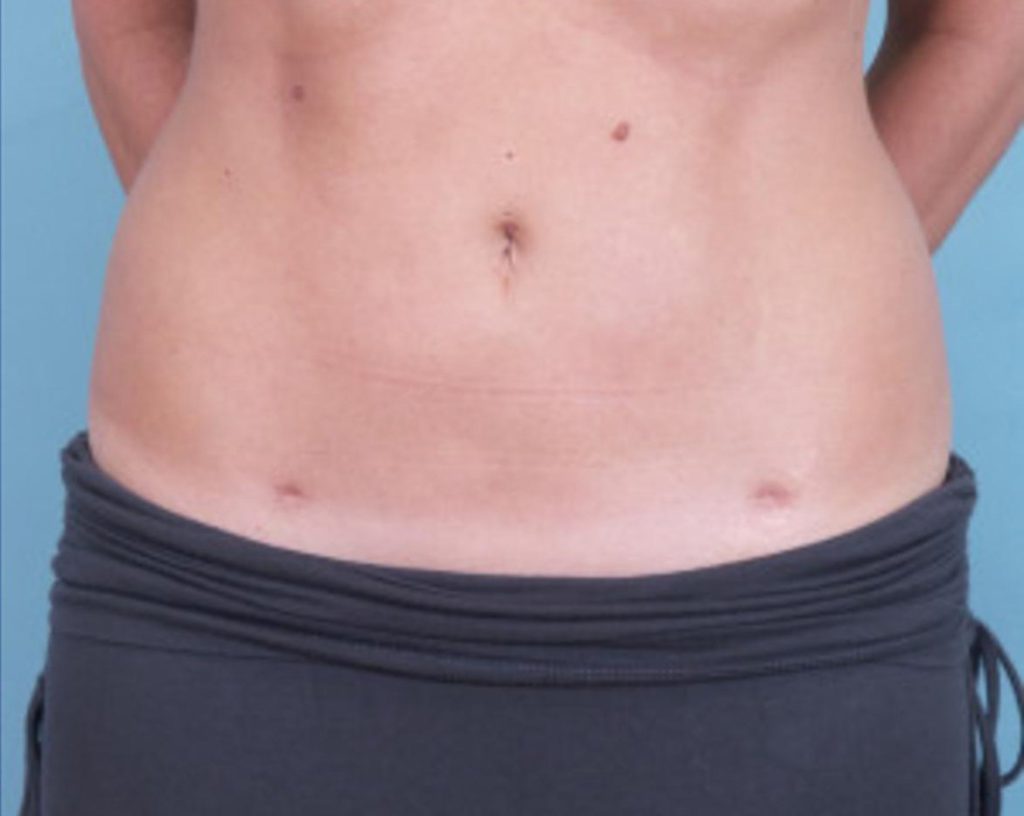Key Takeaways
-
Understand Scar Formation: Liposuction scars, including keloid scarring, are a natural part of the healing process following the fat removal procedure in cosmetic surgery, which may also result in loose skin. Knowing why they form helps you manage expectations.
-
Influencing Factors: Factors like skin type, genetics, and post-op care significantly impact keloid scars and liposuction scars appearance. Tailor your care routine accordingly.
-
Incision Site Matters: The location of incisions, such as in skin folds or the treatment area, can affect scar visibility, including keloid scars and liposuction scars. Discuss options with your surgeon to minimize noticeable scarring.
-
Effective Treatments: Silicone sheets, peels, dermabrasion, cryotherapy, and laser therapy offer various ways to reduce the appearance of keloid scars and liposuction scars. Consult with a specialist at the clinic to choose the best scar removal option and proper scar care for the treatment area.
-
Post-Lipo Care: Proper post-operative care, including staying hydrated and avoiding sun exposure in the treatment area, is crucial to minimizing scars after liposuction.
-
Consult Professionals: Always seek advice from qualified professionals for personalized scar treatment plans, including liposuction scars, and follow their guidelines closely for your body.
Understanding Liposuction Scars
Microscopic Scarring
All surgical procedures cause microscopic scarring. Liposuction is no exception. Fat cells are removed through small incisions, causing tiny injuries to the skin and underlying tissues, which may result in liposuction scars in the treatment area. These injuries heal with scar tissue at a microscopic level in the body, similar to liposuction scars.
Modern Techniques
Modern techniques aim to reduce visible scars. Tumescent liposuction uses smaller instruments and precise methods. Surgeons make tiny incisions, often less than a centimeter long, for liposuction scars and proper scar care on the body. This approach helps minimize noticeable scars.
Visible Scars
Visible scars from liposuction are usually minimal. They often appear as small dots or freckles on the body, similar to liposuction scars requiring scar care. These scars can fade over time, becoming less noticeable.
Incision Sites
Surgeons choose incision sites carefully. They place them in natural body creases or hidden areas for liposuction scars and scar care. This strategic placement helps conceal any visible scarring.
Healing Process
The healing process affects scar appearance. Proper care can help scars heal better and become less visible. Following post-operative instructions is crucial for optimal healing.
Factors Influencing Scarring
Age
Age plays a significant role in scarring. Older individuals may experience slower healing. Their skin loses elasticity, making scars more noticeable. Younger patients often heal faster. Their skin is more resilient after liposuction, leading to less visible scars.
Genetics
Genetics also impact scar formation. Some people are genetically predisposed to form thicker scars. Others might heal with minimal scarring. Family history can provide clues about how one’s body heals, including factors like liposuction and scar care.
Skin Type
Skin type affects the appearance of scars. Oily skin may develop more prominent scars due to increased sebum production. Dry skin might result in finer lines but could take longer to heal, affecting scar care.
Hyperpigmentation
Darker-skinned patients may face hyperpigmentation issues. The area around the scar can darken after surgery. This discoloration usually fades over time but can last several months with proper scar care after liposuction.
Keloid Formation
Keloids are rare in liposuction procedures. The small incisions used reduce this risk significantly. However, those prone to keloids should discuss scar care concerns with their doctor.
Incision Sites and Scarring
Strategic Placement
Surgeons choose incision sites carefully to reduce visible scarring. They often make small incisions in hidden areas like the belly button or along natural body lines for liposuction and scar care. This makes scars less noticeable after healing.
Impact of Location and Size
The location and size of an incision affect scar visibility in liposuction. Smaller incisions during liposuction lead to tiny scars that are harder to see. Large incisions can result in more significant scarring. The surgeon’s skill also plays a role in this.
Target Areas
Incision points vary based on targeted fat deposits. For example, incisions for abdominal liposuction may be different from those for thigh liposuction. Each area requires a specific approach to minimize visible scars from liposuction.
Skin Folds and Natural Lines
Making incisions along skin folds or natural lines during liposuction helps hide scars. These areas naturally conceal marks better than flat skin surfaces. Surgeons use these techniques to improve cosmetic outcomes.
Use of Cannula
A cannula is a thin tube inserted through the incision site during liposuction. It helps remove fat without making large cuts, which reduces the risk of keloid scarring and other complications associated with liposuction.
Qualified Surgeons
Choosing qualified surgeons is crucial for minimizing scarring. Experienced plastic surgeons know how to place incisions strategically and use advanced techniques, including liposuction, to reduce injury and promote better healing.
Treatment Options for Scars
Scar Care
Proper scar care is essential after liposuction. Follow your surgeon’s instructions carefully. Keep the liposuction treatment area clean and dry to prevent infection. Use recommended ointments or creams to aid the healing process.
Healing Process
The healing process varies for each person. It generally takes a few weeks to months for scars to fade. Patience is crucial during this period, as rushing liposuction recovery might worsen scarring.
Professional Assessment
A professional assessment can help determine the best treatment plan, including liposuction. Dermatologists or plastic surgeons evaluate the scar type, suggest appropriate treatments, and may recommend liposuction. They may recommend topical treatments, laser therapy, liposuction, or other methods.
Topical Treatments
Topical treatments are often used for minor scars. Silicone gels or sheets can reduce redness and improve texture. Regular application is necessary for several weeks for noticeable results.
Laser Therapy
Laser therapy is effective for more prominent scars. Different types of lasers target various skin layers to promote collagen production and reduce scar visibility. Multiple sessions may be needed.
Microneedling
Microneedling involves tiny needles creating micro-injuries in the skin. This stimulates collagen production and helps smooth out scars over time. It’s a minimally invasive option with minimal downtime.
Steroid Injections
Steroid injections can flatten raised scars. These are usually administered by a healthcare professional over several sessions. The injections help reduce inflammation and improve the appearance of thickened scars.
Surgical Options
In severe cases, surgical options might be considered. Scar revision surgery removes old scar tissue and repositions it to heal more evenly. This option is typically reserved for significant scarring issues.
Silicone Sheets and Scars
How They Work
Silicone gel sheets help hydrate scar tissue. This hydration softens the scar, making it less noticeable. The silicone creates a barrier that locks in moisture. This process can improve the appearance of scars over time.
Ease of Use
Silicone sheets are easy to use. Patients simply apply them to the affected area. They are non-invasive and do not require any special tools or procedures. Many patients prefer this method because it is simple and does not involve surgery.
Clinical Studies
Several clinical studies support the effectiveness of silicone gel sheets. A study published in 2002 showed significant improvement in scar appearance after regular use of silicone sheets. Another study in 2013 confirmed these findings, noting reduced redness and thickness in scars treated with silicone gel.
Long-Term Benefits
Using silicone sheets consistently can lead to long-term benefits. Over time, scars become softer and flatter. Many patients report feeling more confident about their appearance as a result.
Peels and Dermabrasion
Chemical Peels
Chemical peels can improve the appearance of liposuction scars. They work by removing the outer layers of skin. This process encourages new skin growth. The new skin is often smoother and less scarred.
Different types of chemical peels exist. Light peels use mild acids like alpha-hydroxy acid (AHA). These are suitable for minor scars. Medium peels use stronger acids like trichloroacetic acid (TCA). They penetrate deeper and are used for more noticeable scars.
Dermabrasion
Dermabrasion is another method to treat scars. It involves a plastic surgeon or dermatologist using a special tool. This tool sands down the top layers of skin. The sanding smooths out the scar tissue.
This procedure can be painful, so local anesthesia is usually applied. After treatment, the skin may appear red and swollen. Healing takes several days to weeks, depending on the depth of treatment.
Suitability for Different Scars
Not all scars respond equally to these treatments. Chemical peels are effective for shallow scars and hyperpigmentation. Deeper scars may need medium or deep peels.
Dermabrasion works well for raised scars like keloids but may not be suitable for those with loose skin. It can also help with uneven texture caused by fat removal procedures.
Skin Types Consideration
Skin type plays a crucial role in choosing between chemical peels and dermabrasion. Fair-skinned individuals generally experience better results from both treatments.
Darker-skinned people might face risks like hyperpigmentation or uneven skin tone after these procedures. Therefore, a thorough consultation with a practitioner is essential before proceeding.

Professional Evaluation
A professional evaluation is necessary to determine suitability for these treatments. A plastic surgeon will assess the severity of your scars during a consultation.
They will consider factors such as:
-
Type of scar: Keloid, hypertrophic, or atrophic.
-
Skin type: Fair, medium, or dark.
-
Previous treatments: Any prior cosmetic surgery or fat removal procedures.
-
Health conditions: Any underlying health issues that could affect healing.
Cryotherapy for Scar Care
Cryotherapy Introduction
Cryotherapy is a method to reduce scar size by freezing scar tissue. This technique uses extremely cold temperatures to treat the skin. It can improve the appearance of certain types of scars.
Process and Benefits
The process involves applying liquid nitrogen to the scar. This freezes the tissue, causing it to peel off over time. New skin forms in its place.
Benefits include:
-
Reduced scar size
-
Improved texture
-
Enhanced appearance
Cryotherapy is effective for hypertrophic scars. These are thick, raised scars that form after liposuction.
Considerations and Precautions
Cryotherapy is not suitable for everyone. Consult with a dermatologist before starting treatment.
Potential side effects include:
-
Skin irritation
-
Redness
-
Swelling
Wearing a compression garment post-treatment helps in healing. Proper care ensures better results.
Laser Therapy for Scars
How It Works
Laser therapy can reduce the appearance of scars. The laser targets and breaks down scar tissue. This helps new skin cells grow. The treated area becomes smoother over time.
Different lasers work in various ways. Some remove the outer layer of skin. Others penetrate deeper to target underlying tissues. Both methods aim to improve skin texture and color.
Types of Laser Treatments
There are different types of laser treatments available:
-
Ablative Lasers: These lasers remove the top layer of the skin. They are effective for deep scars.
-
Non-Ablative Lasers: These penetrate deeper without removing the top layer. They stimulate collagen production.
-
Fractional Lasers: These treat a fraction of the skin at a time, leaving surrounding areas untouched. This speeds up healing.
-
Pulsed-Dye Lasers: These target blood vessels within a scar, reducing redness and flattening keloid scars.
Each type caters to different scar characteristics. Ablative lasers are good for severe scarring, while non-ablative lasers suit mild scars.
Consult a Specialist
Consulting with a specialist is crucial before starting laser therapy. Specialists evaluate your scar type and skin condition. They recommend the most suitable laser treatment.
During consultation, discuss your medical history and any previous treatments. This helps in choosing an effective plan tailored to your needs.
Minimizing Scars Post-Lipo
Follow Instructions
Following post-liposuction care instructions is crucial. Surgeons provide specific guidelines to support healing. These instructions often include wearing compression garments. These garments help reduce swelling and support the treated areas.
Proper wound care is also vital. Keeping the incision sites clean prevents infection. Avoiding strenuous activities can prevent stress on the healing tissues.
Scar Treatments
Timely intervention with scar treatments can enhance outcomes. Options like silicone sheets or gels can be effective. They help flatten and soften scars over time.
Laser therapy, as mentioned earlier, is another option. It works by targeting scar tissue, promoting new skin growth. Consulting with a dermatologist early can make a significant difference.
Healthy Lifestyle
A healthy lifestyle influences scar healing and visibility. Maintaining a balanced diet provides essential nutrients for skin repair. Foods rich in vitamins A, C, and E are especially beneficial.
Avoiding smoking is critical. Smoking reduces blood flow to the skin, slowing down the healing process. Quitting smoking before and after surgery improves overall recovery.
Hydration Matters
Staying hydrated is important for skin health. Drinking plenty of water helps keep the skin supple and aids in healing.
Applying moisturizers regularly keeps the skin hydrated from the outside. Look for products containing hyaluronic acid or glycerin.
Sun Protection
Protecting scars from sun exposure is essential. UV rays can darken scars, making them more noticeable.
Using sunscreen with at least SPF 30 on exposed scars helps prevent this issue. Wearing protective clothing can also shield scars from direct sunlight.
Final Remarks
Liposuction scars can be a concern, but with the right care and treatments, you can minimize their appearance. From understanding the factors influencing scarring to exploring various treatments like silicone sheets, peels, cryotherapy, and laser therapy, you’re now equipped with valuable knowledge. This info empowers you to make informed decisions about your post-lipo care.
Don’t let scars hold you back. Take proactive steps to treat and prevent them effectively. Consult with your healthcare provider for personalized advice. If you found this guide helpful, share it with others who might benefit. Your journey to smoother skin starts now!
Frequently Asked Questions
What are liposuction scars?
Liposuction scars are small marks left on the skin after the procedure. They form at incision sites where the cannula was inserted.
How can I minimize liposuction scars?
To minimize scars, follow your surgeon’s aftercare instructions. Use silicone sheets and keep the area clean and moisturized.
Are there treatments to reduce liposuction scars?
Yes, treatments include silicone sheets, peels, dermabrasion, cryotherapy, and laser therapy. Consult a dermatologist for personalized advice.
Do all liposuction patients get scars?
Most patients have some scarring. However, the visibility varies based on factors like skin type, healing process, and incision care.
Where are common incision sites for liposuction?
Common incision sites include areas near the treatment zone such as the abdomen, thighs, and arms. These sites are chosen to be less noticeable.
Can laser therapy help with liposuction scars?
Yes, laser therapy can reduce scar appearance by promoting collagen growth and improving skin texture. It’s effective for many types of scars.
What factors influence the severity of liposuction scars?
Factors include skin type, genetics, surgeon skill, aftercare practices, and overall health. Proper care can mitigate severe scarring.





